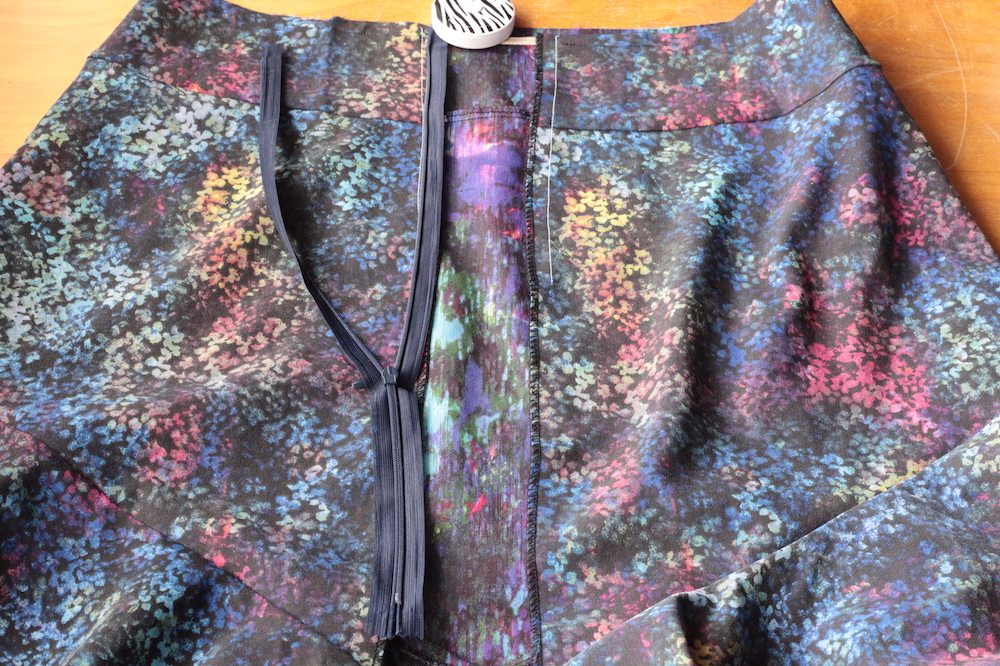

When I begin to fold the seam allowance away from me (to the wrong side where it belongs) the zipper should disappear, leaving the pull tab visible.

I find the easiest way to figure out which way to insert the zipper itself is with the right side facing and the zipper next to the opening seam, right side up.

This makes the line visible on the right side of this highly textured fabric. This particular fabric is not easily marked, so I drew my mark on the wrong side and basted that line with thread. For an invisible zipper, this line will need to be visible on the right side of the fabric. The point where the fabric seam meets the zipper opening is likely to get a lot of stress and the interfacing will help to reinforce that spot. Also make sure that the interfacing is longer than the zipper opening. For an invisible zipper, one inch is plenty. The strip needs to be wide enough to extend beyond either side of the seam fold so that the permanent stitching line will catch the stabilizer. A strip of silk organza is an excellent option, as is a strip of fusible interfacing (make sure to choose an appropriate weight for your garment fabric). The trick I find most helpful for installing (any) zipper is to reinforce the opening edges of the garment. Also, too much heat can melt the teeth together, ruining the zipper. I usually take a quick pass at my invisible zippers with an iron, but do not attempt to flatten them since it can affect the integrity of the zipper. To make it easier to access the stitching line and keep the folded coils out of the way, you can iron the zipper open using a low/synthetic setting on your iron with no steam. I like to use pinking shears to keep the tape from fraying, but really any scissors will do (except for your good fabric sheers, of course – keep those away from bulky nylon zipper coils!).

You can now trim the zipper one inch below the thread stopper. Those stitches serve as a stop for the zipper until inserted into the garment, when the seamline creates a permanent stop. A simple length of thread will do the trick – just run the thread right over the teeth of the zipper a few times. Now is the time to create a new stop for the zipper which will keep the zipper pull from zipping right off the end of the cut/shortened zipper tape while you are sewing it in place. You can stitch in a makeshift zipper stop right at that initial marking, but I find that it is easier to work with a little extra length, especially with an invisible zipper, so I mark a good inch below that point. Because the invisible zipper folds in on itself, it is difficult to stitch in that fold the closer you get to the zipping mechanism. Mark your required length on the zipper tape. If the pattern calls for a shorter zipper than you have on hand, that is not a problem. An invisible zipper is a wonderfully inconspicuous option. There seems to be an infinite variety of zippers out there – the exposed zipper is getting a lot of attention these days on the fashion front, but I generally prefer that the closure on a garment does not demand a lot of attention. For this project, I am working with Colette’s Parfait Dress and this yummy textured basket-weave linen blend. Hello everyone! It’s Laura Mae from Lilacs & Lace here with a few tips to help you tackle invisible zippers.


 0 kommentar(er)
0 kommentar(er)
